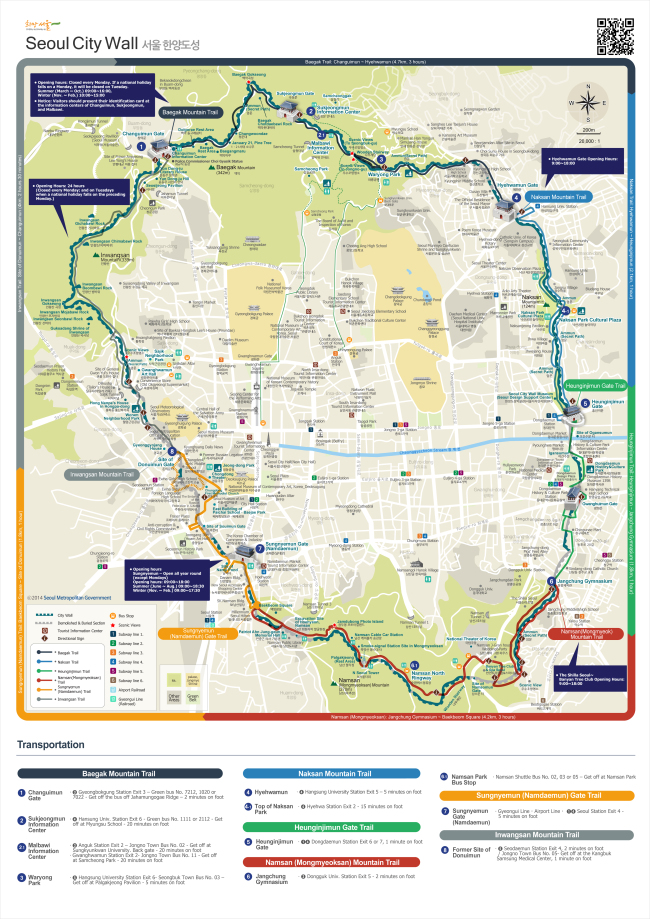Inside today’s busy and crowded Seoul remain old trails of a massive stone wall that once encircled the city -- Hanyang Doseong, or simply the Seoul City Wall.
Following the ridges of Bugaksan (Baekaksan), Naksan (Naktasan), Namsan (Mongmyeoksan) and Inwangsan, the four main mountains surrounding the center of Seoul, the trails from the Joseon era remain today for people to experience different views of the city.
Following the ridges of Bugaksan (Baekaksan), Naksan (Naktasan), Namsan (Mongmyeoksan) and Inwangsan, the four main mountains surrounding the center of Seoul, the trails from the Joseon era remain today for people to experience different views of the city.

Constructed by King Tae-jo in 1396, the city wall set the border and protected the urban center of Hanyang, the capital of the Joseon Dynasty, which lasted from 1392 to 1897.
The Hanyang Doseong served its purpose as a fortress for the longest time in the world, from 1396 to 1910, with its average height at 5 to 8 meters and total length at 18.627 kilometers. Today, 13.715 km of the trail remains, as parts of the wall that were destroyed during Japan’s 1910-45 colonial rule and the 1950-53 Korean War have been restored by the city.
For travelers and visitors, the Seoul Metropolitan Government has planned six walking trail courses. About an hour walking course runs from the Baegaksan Mountain Trail that goes between the gates Changuimun and Hyehwamun. From there is the Naksan Mountain Trail, which leads to the gate Heunginjimun in about an hour’s walk.
The trail for Heunginjimun is a one-hour course to Jangchung Gymnasium, and Namsan Mountain Trail is the longest, at three hours, to reach Baekbeom Square. From there, Sungnyemun Gate Trail is a one-hour walk to the gate Donuimun. The last trail is a 2 1/2-hour path, the Inwangsan Mountain Trail that leads visitors to the gate Changuimun.
All trail paths are open every day, except for Baekaksan Mountain Trail where entrance is limited on Mondays. As it is geologically categorized as a military zone, the information kiosks at Changuimun, Sukjeongmun and Malbawi -- on the Baekaksan Mountain Trail -- check identification.
The national cultural property that has stood for more than half a millennium provides a clear look of history and wonderful scenic views of the urban city.
By Jo He-rim (herim@heraldcorp.com)








![[KH Explains] How should Korea adjust its trade defenses against Chinese EVs?](http://res.heraldm.com/phpwas/restmb_idxmake.php?idx=644&simg=/content/image/2024/04/15/20240415050562_0.jpg&u=20240415144419)











![[Today’s K-pop] Stray Kids to return soon: report](http://res.heraldm.com/phpwas/restmb_idxmake.php?idx=642&simg=/content/image/2024/04/16/20240416050713_0.jpg&u=)